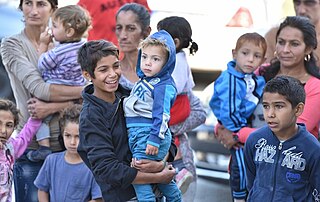The politics of Bosnia and Herzegovina are defined by a parliamentary, representative democratic framework, where the Chairman of the Council of Ministers of Bosnia and Herzegovina, named by the Presidency of Bosnia and Herzegovina, is the head of government. Executive power is exercised by the Council of Ministers of Bosnia and Herzegovina and the Presidency of Bosnia and Herzegovina. Legislative power is vested in both the Council of Ministers and the Parliamentary Assembly of Bosnia and Herzegovina. Members of the Parliamentary Assembly are chosen according to a proportional representation system. The judiciary is independent of the executive and the legislature.

The Federation of Bosnia and Herzegovina is one of the two entities composing Bosnia and Herzegovina, the other being Republika Srpska. The Federation of Bosnia and Herzegovina consists of ten autonomous cantons with their own governments and legislatures.

The House of Representatives of Bosnia and Herzegovina is one of the two chambers of the Parliamentary Assembly of Bosnia and Herzegovina, with the other being the House of Peoples of Bosnia and Herzegovina. The chamber consists of 42 members which are elected by party-list proportional representation. 28 members are elected from the Federation of Bosnia and Herzegovina, and 14 from Republika Srpska. Members serve for terms of four years. The current membership of the chamber was elected on 2 October 2022.

Trnovo is a town and municipality located in Sarajevo Canton of the Federation of Bosnia and Herzegovina, an entity of Bosnia and Herzegovina. As of 2013, the municipality had a population of 1,502 inhabitants. The town itself had a total population of 1,023, with 956 of them living in the Republika Srpska part and 67 in the Federation part.

The Alliance of Independent Social Democrats is a Serb political party in Bosnia and Herzegovina. Founded in 1996, it is the governing party in Republika Srpska, with its leader, Milorad Dodik, serving as the current president of Republika Srpska. The party's vice-president, Željka Cvijanović, is the current member of the Presidency of Bosnia and Herzegovina, while SNSD member Radovan Višković is the current prime minister of Republika Srpska.

General elections were held in Bosnia and Herzegovina on 1 October 2006. They decided the makeup of Bosnia and Herzegovina's Presidency as well as national, entity, and cantonal governments.
General elections were held in Bosnia and Herzegovina on 5 October 2002. Voter turnout was 55%.

The Xoraxane in Bosnia and Herzegovina are the largest of the 17 national minorities in the country, although—due to the stigma attached to the label—this is often not reflected in statistics and censuses.

General elections were held in Bosnia and Herzegovina on 3 October 2010. They decided the makeup of Bosnia and Herzegovina's Presidency as well as national, entity, and cantonal governments.
Parliamentary elections were held in Bosnia and Herzegovina on 11 November 2000. Voter turnout was 64%.
The Croatian National Assembly is a political organisation of Croat political parties in Bosnia and Herzegovina. The organisation serves as a platform to coordinate political and cultural activities of different parties and stakeholders in the Croatian community and to promote the initiative to create a federal unit with Croatian majority in the country.

General elections were held in Bosnia and Herzegovina on 12 October 2014. They decided the makeup of Bosnia and Herzegovina's Presidency as well as national, entity, and cantonal governments. Voter turnout was 54.47%.

The Croat federal unit, Croat entity, or third entity, is a proposed federative unit in Bosnia and Herzegovina encompassing areas populated by Croats, to be created by the partition of the Federation of Bosnia and Herzegovina into Croat and Bosniak entities. The proposal is supported by the Croatian National Assembly, which includes the electoral representatives of Bosnian Croats. However, a detailed plan for its partition, including its borders, has yet to be finalized.

General elections were held in Bosnia and Herzegovina on 7 October 2018. They decided the makeup of the presidency as well as national, entity and cantonal governments. Voter turnout was 54%.

General elections were held in the Federation of Bosnia and Herzegovina on 7 October 2018 as part of the Bosnian general elections. Voters elected the 98 members of the House of Representatives of the Federation of Bosnia and Herzegovina and the assemblies of the cantons of the Federation of Bosnia and Herzegovina.

Municipal elections were held in Bosnia and Herzegovina on 15 November 2020 to elect mayors and assemblies in 143 municipalities. Originally scheduled for 4 October, they were postponed due to a lack of funds.
Svetozar Pudarić was a Bosnian politician.

General elections were held in Bosnia and Herzegovina on 2 October 2022. They decided the makeup of the presidency as well as national, entity and cantonal governments.

General elections were held in the Federation of Bosnia and Herzegovina on 2 October 2022 as part of the Bosnian general elections. Voters elected the 98 members of the House of Representatives of the Federation of Bosnia and Herzegovina and the assemblies of the cantons of the Federation of Bosnia and Herzegovina.

















